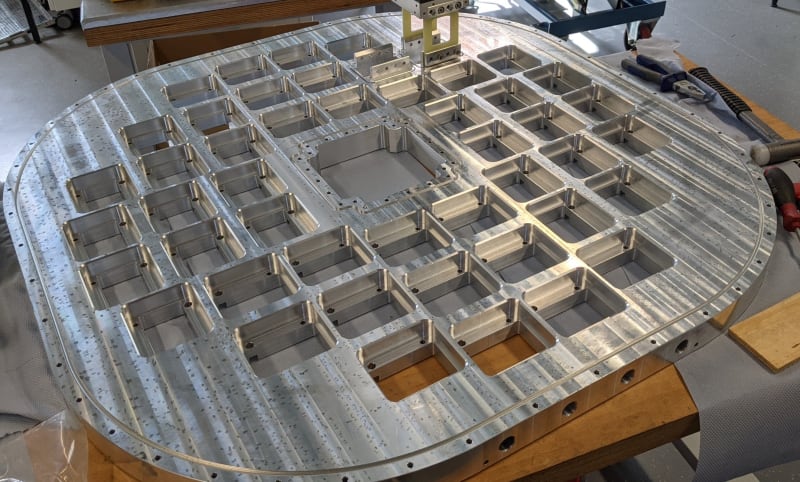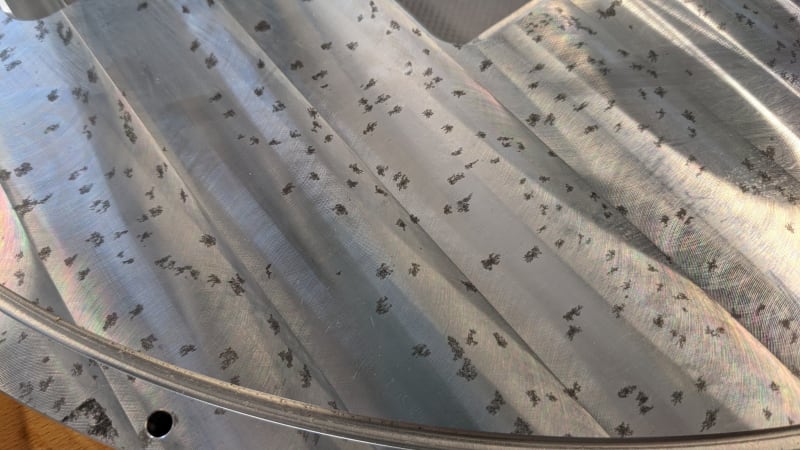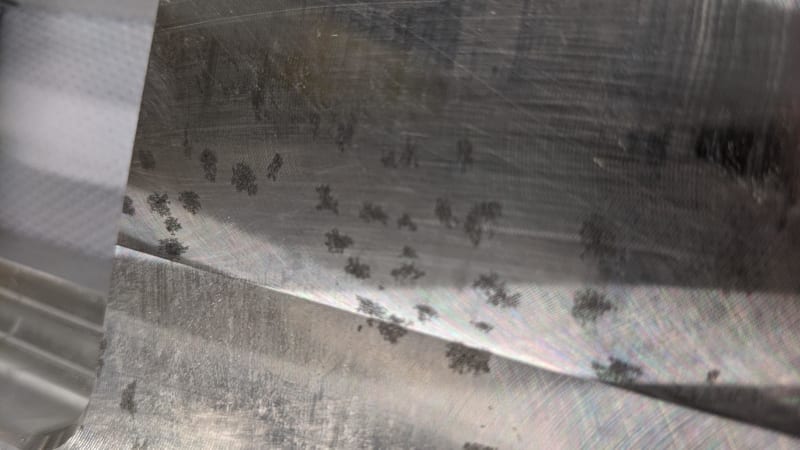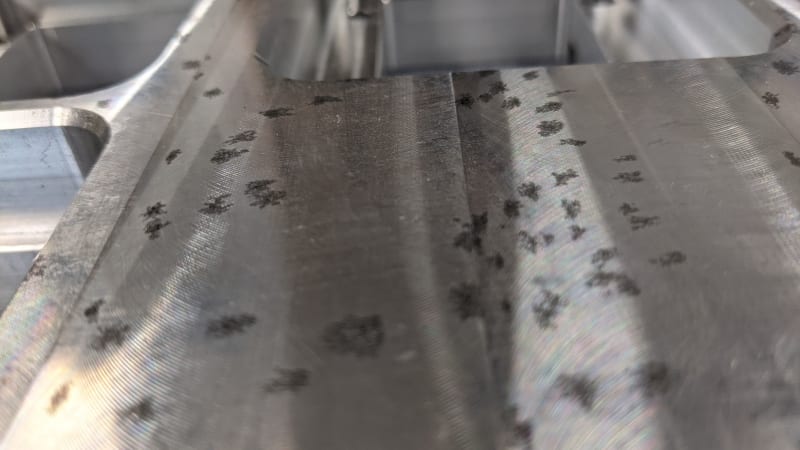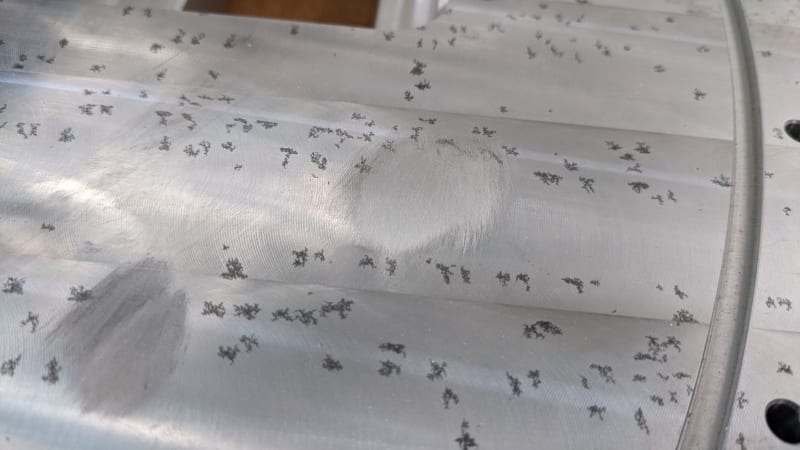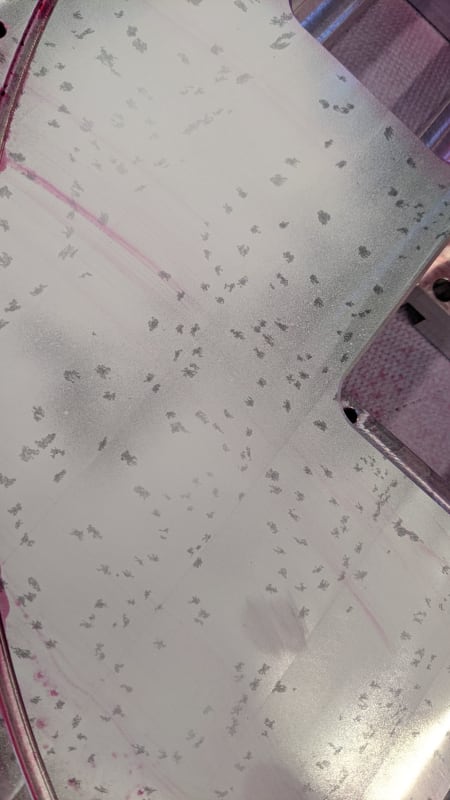drodrig…
The part as is see it has a HIGH value in the fully machined state... IE: is complex with high strength requirements.
Hate to tell you... 7075-T6xxx plate is notorious for pitting corrosion, exfoliation corrosion [EXCO] and stress corrosion cracking [SCC].
In military aircraft applications we are prohibited from using parts made from 7075-T6 wrought materials thicker than 0.080-inch [2.03-mm] per MIL-STD-1568, thus...
MIL-STD-1568D
4.6.1.2 Aluminum alloy selection limitations. Wrought product forms of aluminum alloys
2020, 7079, and 7178 in all temper conditions and 7075-T6 shall not be used for structural
applications. Use of 2000-series aluminum alloys in the -T3 and -T4 tempers and 7000-series
aluminum in the -T6 tempers in thicknesses greater than 0.080 inch (2.032 mm) shall not be
used. Suitably clad aluminum alloys or inherently corrosion-resistant alloys shall be used in
exterior skin that is 0.125 inch (3.175 mm) or less in thickness, forms a leading-edge, exhaust
trail area of any source or wheel well area, is spot- or seam-welded, or is the face sheet in
bonded sandwich construction. Non-clad materials may be used for the aileron skins, the flap
shroud skins and the flap shroud closure pocket. To preclude partial aging in heat-treatable
alloys, the bonded sheet shall be in the artificially aged condition prior to bonding. The
references to exterior surfaces and skin herein mean the external surface only and do not
preclude use of material clad only on one side or the removal of cladding from internal
surfaces.
NOW... good news... 7075-T7351 temper plate... which is 'simply' over-age heat-treated -T651 plate [additional temperatures/time]... will maintain high strength and provide a significant improvement in resistance to pitting/EXCO and SCC... (and also) if You add-in **shot peening of all surfaces [to crush/close-up grain-ends]... (and also) thin-film/sealed anodize [MIL-A-8625] (or) chromate conversion coating [CCC] MIL-DTL-5541 Class 1A (and also) corrosion protective epoxy primer [MIL-DTL-23377]… and You will have a huge increase in resistance to all forms corrosion. ** I prefer ceramic bead peening media for aluminum.
Your first step is to make sure Your rolled plate is procured in -T7351 temper... or make sure all parts machined in the -T651 temper plate are quickly over-age heat treated to -T7351 [AHT per AMS2770, MIL-H-6088, etc]. Then apply good corrosion protective finishes.
Regards, Wil Taylor
o Trust - But Verify!
o We believe to be true what we prefer to be true. [Unknown]
o For those who believe, no proof is required; for those who cannot believe, no proof is possible. [variation,Stuart Chase]
o Unfortunately, in science what You 'believe' is irrelevant. ["Orion", Homebuiltairplanes.com forum]
